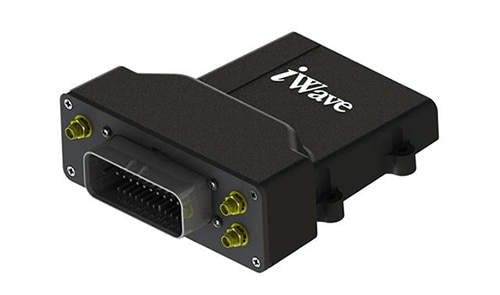使用 iWave 远程信息处理解决方案管理割草机车队
2024-08-22
车辆远程信息处理技术推动割草机走向未来
车辆远程信息处理系统集成到割草机中的趋势,正在给园林绿化行业带来一场革命,增强了这些机器的功能,使其发挥最佳性能。通过整合远程信息处理技术,割草机可为车队经理提供实时、便携式解决方案,用以监控和管理整个车队,包括车辆、驾驶员和资产。这项技术进步不仅提高了效率,还可带来能够显著节约成本和改善运营的洞察力。
割草机车队管理面临的挑战
尽管园林绿化行业的需求不断增长,但车队经理面临着一些可能阻碍效率和盈利能力的挑战。前三大挑战包括:
- 降低燃料成本:燃料费用在割草机车队的运营成本中占很大比重。燃料使用效率低下、空转和路线选择不当都会导致燃料消耗量过大。通过提供燃料使用数据、优化路线、监控驾驶员行为,远程信息处理系统可减少空转并提高燃料效率,从而帮助缓解这些问题。
- 降低人工成本:人工成本是园林绿化行业的另一项主要开支。管理庞大的员工队伍、保障生产力并尽量减少停机时间,对于保持盈利能力至关重要。远程信息处理系统可以通过跟踪员工工时、自动填写工时表以及提供对员工工作效率的深入见解来提供帮助。运用这项技术可以更好地进行调度、减少加班费用,并帮助找出可以提高效率的环节。
- 车辆购置和更换:购置新车辆和更换旧车辆的成本高昂。明智决定更换车辆的时机可以节省大量资金。远程信息处理系统可提供有关车辆使用情况、维护需求和整体性能的数据,帮助经理做出数据驱动的设备更换决策。通过预测维护需求和预防意外故障,远程信息处理技术可以延长割草机的使用寿命,减少更换频率。
管理误判的影响
在管理燃料成本、劳动力成本、车辆购置和更换方面出现任何误判,都会严重影响园林绿化企业的利润。燃料使用效率低下会耗费财力资源,高昂的人工成本会侵蚀利润空间,车辆资产管理不善会导致不必要的新设备支出。利用远程信息处理技术,车队经理可以全面了解车队运营情况,使其管理策略与业务目标保持一致,并提高整体效率和盈利能力
割草机远程信息处理解决方案
iWave 是一家领先的嵌入式设计和解决方案公司,通过其强固型远程信息处理设备提供全面的割草机即装即用解决方案。该设备提供广泛的接口和功能,在解决割草机和园林绿化车队固有的管理挑战方面可发挥关键作用。
iWave 强固型远程信息处理设备的主要功能和优势:
- 符合 IP67 标准:强固型远程信息处理设备(图 1)符合 IP67 标准,确保耐用性并防尘防水。这使其非常适合在经常暴露于恶劣条件下的户外环境中使用,保障设备的功能并延长其使用寿命。
 图 1:iWave 的强固型远程信息处理设备。(图片来源:iWave)
图 1:iWave 的强固型远程信息处理设备。(图片来源:iWave)
- 多种通信方式:
- Wi-Fi:允许在一定范围内进行无线数据传输,支持便捷的连接和数据传输。
- 蓝牙:提供短距离无线通信,用于连接其他设备和配件。
- LTE Cat 4/Cat M1:确保长距离数据传输所需的高速蜂窝连接,对于实时监控和远程管理必不可少。
- GPS/GLONASS/北斗/Galileo:这些卫星导航系统提供精确可靠的位置追踪,对车队管理和路线优化至关重要。
- 多种输入/输出:
- 3 x CAN:可对发动机和其他关键系统进行实时监测和控制,从而实现诊断和性能优化。
- 10/100 以太网:提供有线网络连接,确保稳定安全的数据传输。
- RS232/RS485/K-Line:支持各种串行通信协议,可与不同的设备和系统集成。
- USB OTG:可轻松与 USB 设备进行数据交换和连接。
- 模拟和数字输入/输出:便于集成各种传感器和控制系统,实现全面监控和自动化。
- 天线支持:该设备支持外置天线,可增强通信和导航信号强度和可靠性。
- 符合各种协议:FMS/J1939/ISO 15765-4/UDS。这些协议可确保与行业标准兼容、与现有系统无缝集成,并确保可靠的通信和数据交换。
- 集成硬件安全元件:提供强大的安全功能,以保护数据并防止未经授权的访问,确保敏感信息的完整性和保密性。
- 附加安全功能:附加安全功能可增强远程信息处理系统的整体安全性和防护等级,防止潜在威胁和漏洞。
强固型远程信息处理设备实操
为每台割草机配备 iWave 的先进强固型远程信息处理设备,可大幅提高车队管理的效率和精确度。该设备符合 IP67 标准,确保其能够承受草坪养护环境中常见的恶劣室外条件,包括接触水和灰尘的情况。这款设备拥有多种通信方式(Wi-Fi、蓝牙、LTE Cat 4/Cat M1),可确保准确报告位置远程信息和附加信息。GPS/GLONASS/北斗/Galileo 的集成可提供全面的实时追踪信息,这对高效管理车队至关重要。
CAN 接口支持对发动机控制装置进行实时监控,确保最佳性能和诊断。此接口还可通过座椅开关跟踪座椅占用情况,确保安全合规,并对转向、牵引发动机、倒车和前进踏板以及外部接合信号进行精确监控。这种全面的数据收集使操作员能够提高工作效率和安全标准,从而树立卓越草坪养护的全新标杆。与机器控制系统连接的传感器检测输入可自动显示切割刀片的实际状态。这一功能可确保操作员对割草机运行状态的变化做出迅速反应,便于在必要时进行主动维护。
借助设备内部的调制解调器辅以提供的 SIM 卡,可在割草机与终端用户观察平台之间实现无缝通信。这种可靠的通信基础设施可确保向中央管理系统高效传输重要的车队数据,包括状态和性能指标。即使在偏远地区,也能持续获取数据,确保每项决策都有最新信息作为支撑。利用远程信息处理系统收集的数据,车队经理可以评估各类客户使用情况。分析可包括跟踪修剪作业的频率和持续时间、确定修剪区域的地形类型和大小模式,以及根据使用强度评估维护间隔。根据从这些分析中收集到的信息,车队经理能够定制保养计划,预测维护需求,并向客户提供个性化建议,最终提高客户的满意度和忠诚度。
在割草机和园林绿化车队管理中采用远程信息处理技术的好处
- 车辆追踪和位置监测:实时追踪可让车队经理随时了解车队中每辆车的确切位置。这项功能有助于优化路线和调度,从而降低燃料成本,提高整体效率。通过了解每台割草机的精确位置,车队经理可以快速分配资源、响应客户需求并确保及时提供服务。
- 生产率和控制:远程信息处理技术使机器能够接收指导、控制操作并进行远程诊断和维修,提高整个车队的透明度。它还能促进作业现场协调,实现流程自动化,提高生产率并加强控制。借助远程信息处理技术,车队经理可以监测发动机性能、跟踪机器使用情况并确保遵守维护计划,从而减少停机时间并最大限度地提高运营效率。
- 失窃追回:资产安全是车队组织非常关注的问题。远程信息处理系统可在车辆移动到预先设定的地理围栏以外时,提供实时警报,从而向执法机关发出预警。这种及早检测与 GPS 追踪相结合,有助于防止资产丢失或损坏。如果发生盗窃,远程信息处理系统提供的精确位置数据可大幅增加找回失窃设备的机会。
- 路线优化:远程信息处理技术使车队经理能够分析历史数据和当前交通状况,为每辆车建议最高效的路线。这有助于减少行驶时间和燃料消耗,从而节约成本。优化路线还能最大限度地减少车辆磨损,延长使用寿命,降低维护成本。
- 降低人工成本,提高计费准确性:远程信息处理解决方案通过跟踪驾驶员与客户互动的持续时间来提高计费准确性。自动工时记录可确保准确支付员工的工作报酬,有助于减少加班和人工成本。此外,实时数据还能让车队经理高效地重新安排车队成员的路线,从而节省燃料并确保及时提供服务。这样就能提供更准确的计费信息,提高客户满意度,并降低人工成本。
量身定制的远程信息处理解决方案为原始设备制造商 (OEM) 赋能:
iWave 专注于提供 ODM(原始设计制造商)解决方案,助力 OEM(原始设备制造商)在日新月异的数字汽车环境中蓬勃发展。iWave 的专业知识提供了一系列量身定制的选项,使客户不必再迁就于通用解决方案。
- 完全满足客户的硬件要求:iWave 可以提供定制的硬件解决方案,以满足客户的特定要求,确保远程信息处理系统与现有设备和工作流程无缝集成。
- 与客户首选的应用程序提供商合作:iWave 与客户选择的应用程序提供商合作,提供全面的解决方案,将最好的硬件与首选的软件相结合,创建最佳的远程信息处理系统。
- 通过首选解决方案合作伙伴提供完全集成式系统:对于寻求即装即用型解决方案的客户,iWave 与值得信赖的解决方案合作伙伴合作,提供完全集成式远程信息处理系统。这种方法可确保远程信息处理系统的所有组件协同工作,提供无缝用户体验。
在整个过程中,客户始终持有对专有数据和关键知识产权的控制权,保留了使其产品有别于竞争对手的特色功能。最终得到的远程信息处理解决方案,是根据每位客户的特定需求,为其量身定制的灵活、可靠、经济高效的解决方案。
免责声明:各个作者和/或论坛参与者在本网站发表的观点、看法和意见不代表 DigiKey 的观点、看法和意见,也不代表 DigiKey 官方政策。


